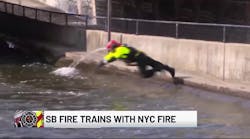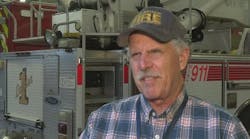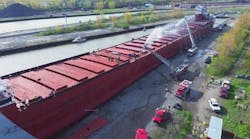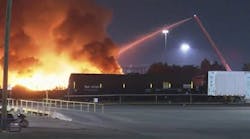I recently read an article that talked about, among other issues, the “required fire flow” for various fireground situations. As I have stated here many times, nothing, absolutely nothing, is as important to fire extinguishment at a structural fire as water. Water is the king at structural fires. All good firefighters, officers and chiefs know this and focus most of their initial efforts on accessing and delivering water to the expanding fire.
Let’s look at basic issues we must confront relative to water.
How much water do we need to fight a structural fire? I’m not sure there is a specific and accurate answer to this question, but let’s start with this thought: A small fire will probably require a small amount of water and a large fire will require a large amount of water. This may sound quite unscientific, but it is true and, more importantly, it is easily understood.
Here’s an example of a small fire and the water required. You arrive at a house where smoke is showing and you quickly determine that a mattress is smoldering in a first-floor bedroom. Of course, the firefighters start a 1¾-inch hoseline stretch into the building, but at the same moment a firefighter carries a 2½-gallon water extinguisher into the house and extinguishes the fire. Small fire, small water.
Another day, an engine arrives at a big-box store and heavy, black smoke is issuing from all three sets of front doors and can be seen above the roof as well. If, and that is a big if, the firefighters decide to attempt an interior hoseline attack, it would be with a 2½-inch hoseline, and the establishment of a supply system would certainly be underway.
But what about a room or two on fire in a detached private dwelling? How much water do we need there? Good question and easy answer! Yes, easy! We’ve all heard about the National Fire Academy (NFA) formula for determining required fire flow, right? Whether or not you have heard of this doesn’t matter because we are not using it. I’ll talk more about that later, so first let’s get back to our question.
How much water is needed for a two-room house fire? Here’s what makes this easy. Forget how much water you need and think instead about how many hoselines you may need. For a one-room fire in a private dwelling, you will need one attack hoseline and you may need two lines. Each line should deliver 175 to 200 gallons per minute, so you will need 200 gpm and may need 400 gpm for this operation.
You arrive at a heavy smoke condition visible inside a one-story row of stores. Of course, you must already know that store fires require 2½-inch hoselines because they deliver the increased water flow (250 gpm) needed for the heavier fire load in stores. How much water do you need? I don’t know, but you may need two of those 2½-inch hoselines, so it’s 500 gpm that you must start setting up for.
So what about that NFA fire-flow formula? This is the formula and this is how it works:
Required flow in gpm equals length times width times the number of floors involved divided by three (GPM = L x W x floors ÷ 3). An example used would be a fast-food restaurant that is 70 feet wide and 120 feet deep. Plug the numbers into the formula and you get 2,800 gpm for a fully involved restaurant. This can be reduced if the building is not fully involved; for example, if only 25% of the restaurant is involved, then the required fire flow would be 700 gpm.
Is this a practical formula you can use while standing in the parking lot at a restaurant on fire in the middle of the night? The answer, of course, is no. I have never seen a fire chief using a pencil and paper to multiply and divide the proper numbers to figure fire flow at a fire. There are many important tasks to complete and doing math problems should not be one of them. Also, how do you get the numbers right? At fires during the night, do you need to run down the side of the building and guess the depth and width with a flashlight? If you can see it, how accurate could your estimate be?
If you simply decide to have two 2½-inch hoselines stretched, you would quickly come up with 50 gpm as a minimum and another 100 or 200 gpm as a safe surplus to supply these two lines. That’s 600 or 700 gpm, which comes out just about where the formula and math quiz left you. Start water!






